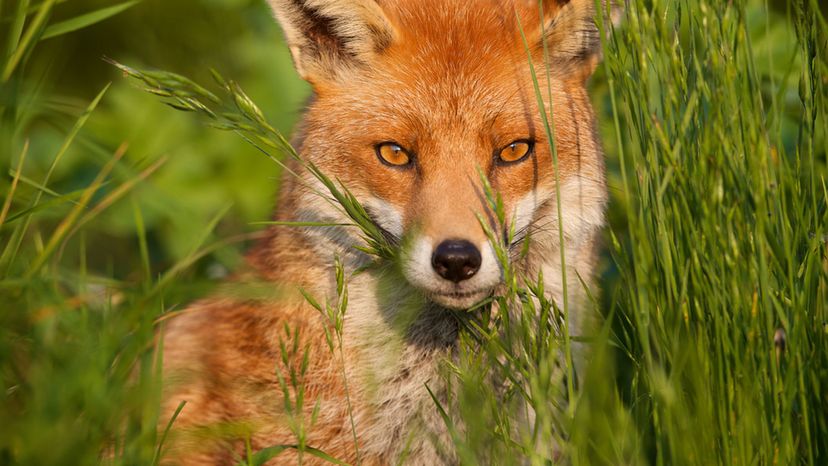
Image: Shutterstock
About This Quiz
That old adage, don't judge a book by its cover, is an important one when you're dealing with the animal kingdom. The Slow Loris, for instance, is so adorable you might think it could kill you with its cuteness. But it's not cuteness that will get you -- it's their venom. Can you tell which of these animals is harmless and which are harmful?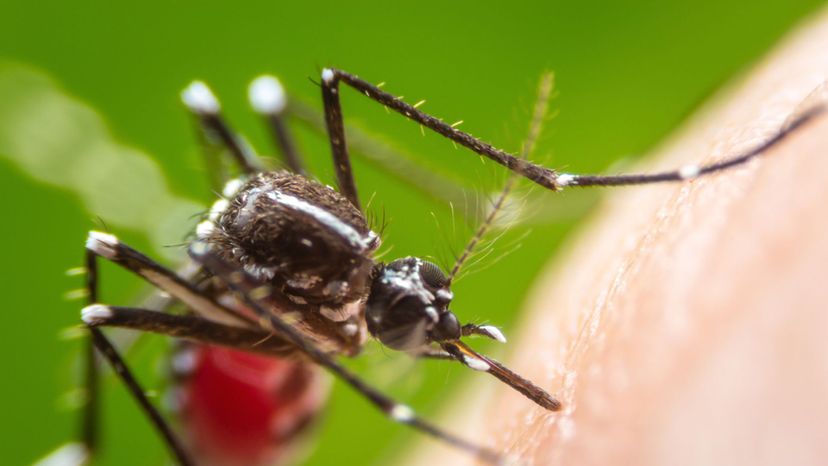
n/a
Is this animal dangerous to humans?
Yes, it is.
It's said they're responsible for killing more people than all of our wars throughout history. While that may be an exaggeration, mosquitoes are annoying -- and they're deadly. They carry and transmit diseases, including malaria, yellow fever, dengue, and encephalitis -- to name a few.
No, not at all.
It can be, but it's rare.
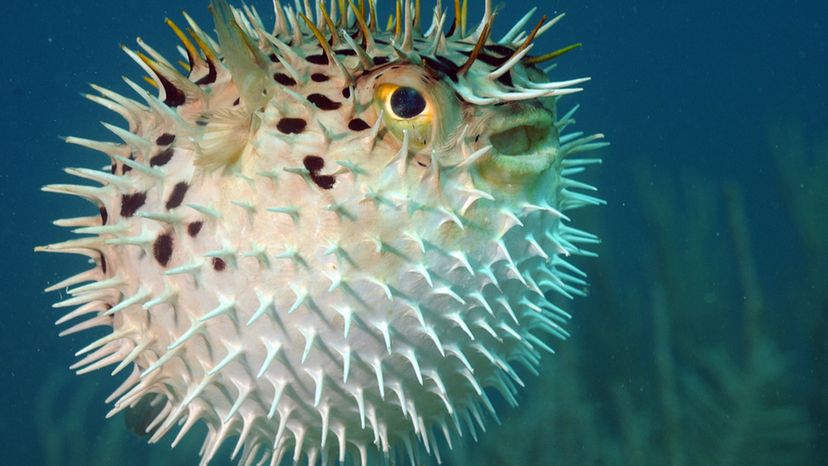
n/a
Is this animal dangerous to humans?
Yes, it is.
Just one pufferfish contains enough of a toxin called tetrodotoxin to kill 30 human adults. In fact, to humans, pufferfish poison is up to 1,200 times more toxic than cyanide -- and there is no available antidote.
No, not at all.
It can be, but it's rare.
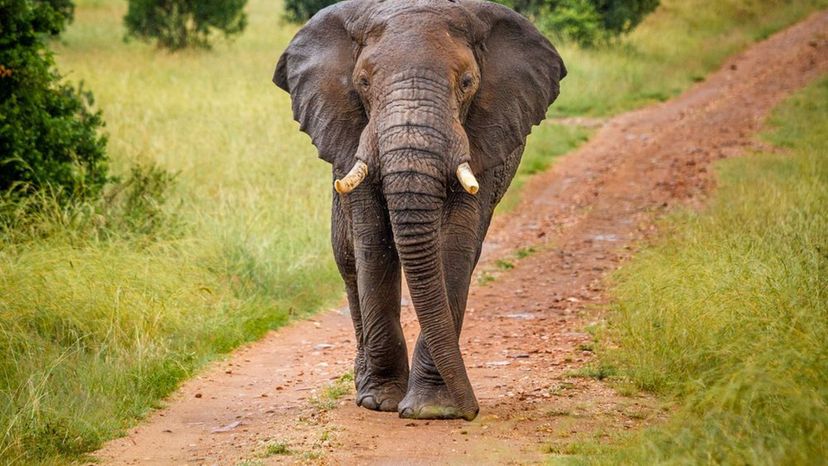
Shutterstock
Is this animal dangerous to humans?
Yes, it is.
Elephants are usually portrayed as peaceful, lovable giants. But each year, 500 people are killed by elephant attacks in the wild -- usually by first goring the person with its tusks and then trampling the body.
No, not at all.
It can be, but it's rare.
Advertisement
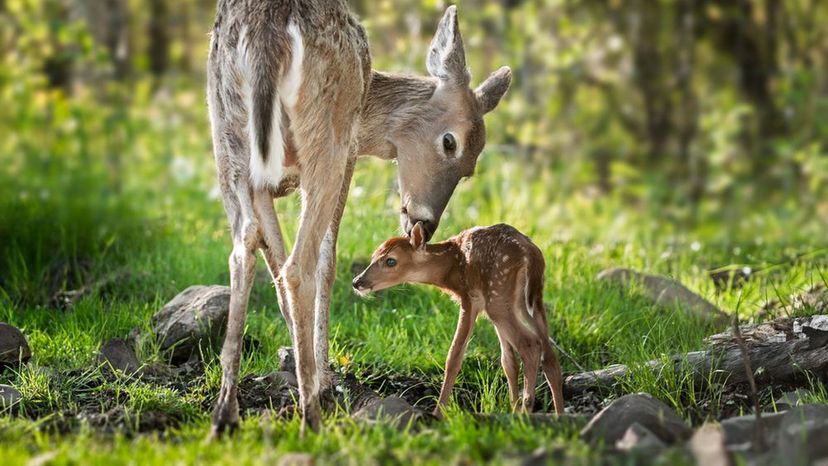
Shutterstock
Is this animal dangerous to humans?
Yes, it is.
No, not at all.
The white-tailed deer isn't dangerous to humans, at least not on purpose. Because these skittish animals are prone to causing car accidents, they do end up killing about 130 Americans every year.
It can be, but it's rare.
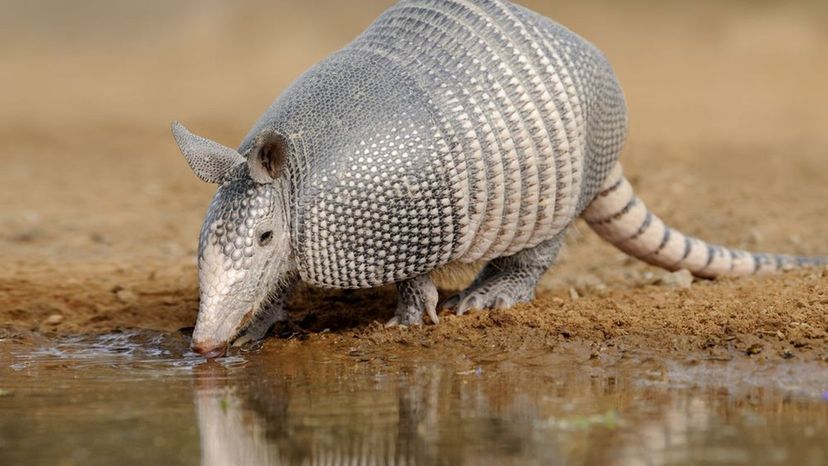
Shutterstock
Is this animal dangerous to humans?
Yes, it is.
No, not at all.
Armadillos are more likely to roll themselves into a defensive ball than strike you with their sharp claws (necessary for all that digging they do). Although these animals aren't interested in harming humans, there are some stories of humans trying to harm them -- and failing when the weapon of choice (a bullet) ricocheted off the armadillo's armor.
It can be, but it's rare.
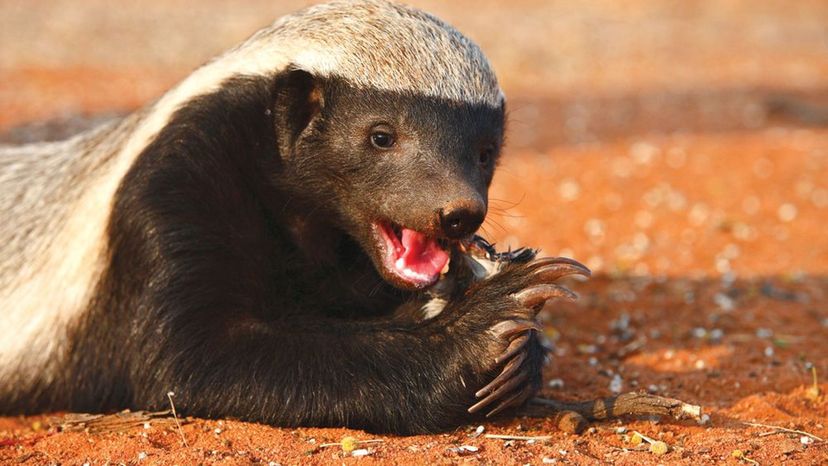
n/a
Is this animal dangerous to humans?
Yes, it is.
"Khrya-ya-ya-ya" screams the honey badger, a weasel-like creature with a bite than can break the shell of a tortoise. These animals aren't just known as the World's Most Fearless Creature, according to the Guinness Book of World Records, they're also known to be really mean animals that will pick a fight with anything -- from a lion to a python to a human.
No, not at all.
It can be, but it's rare.
Advertisement
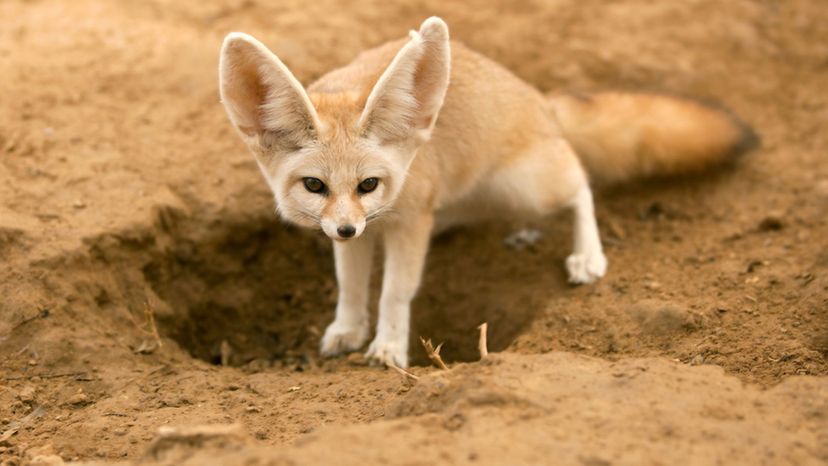
Shutterstock
Is this animal dangerous to humans?
Yes, it is.
No, not at all.
With their unusually large ears, fennec foxes are easy to spot, and in some parts of the world, including the U.S., they're considered to be an exotic pet (despite being notoriously difficult to capture). Although they have a long list of predators, including hyeneas and eagle owls, these two-pound foxes would rather play with you than hurt you.
It can be, but it's rare.
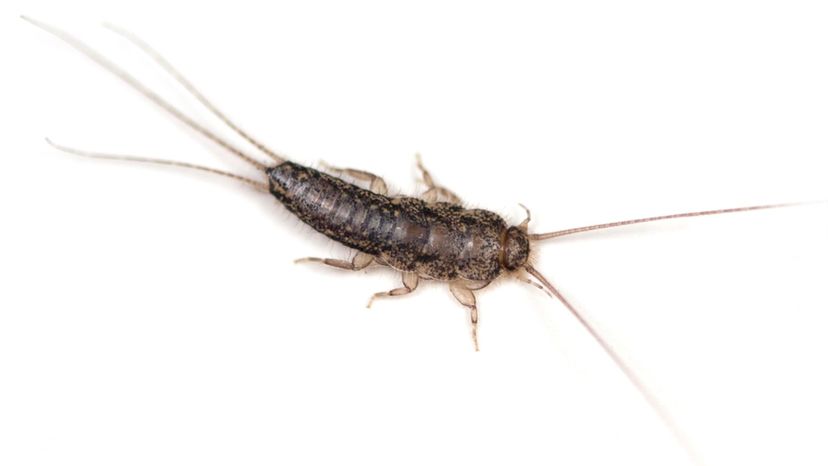
Shutterstock
Is this animal dangerous to humans?
Yes, it is.
No, not at all.
Silverfish are creepy looking insects, but they're not known to bite people, nor do they carry any diseases. Let them into your home and they will, however, damage books and other paper products, clothing, and food.
It can be, but it's rare.

Shutterstock
Is this animal dangerous to humans?
Yes, it is.
As many as 70 to a few hundred people are killed every year by lions in Tanzania. It shouldn't be a big surprise: Lions consider humans prey. Think about it -- we don't have horns or spikes or anything that outwardly gives us the appearance of being a solid rival to the cat we call the King of the Jungle.
No, not at all.
It can be, but it's rare.
Advertisement
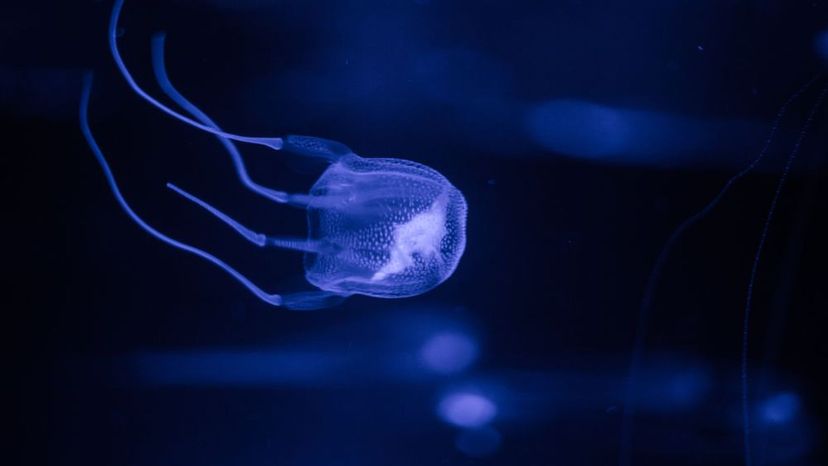
Shutterstock
Is this animal dangerous to humans?
Yes, it is.
Not all jellyfish are venomous, but the big box jellyfish is, and it's the most venomous of them all. Stung by its tentacle, a human may experience vomiting, headaches, agitation, profuse sweating, rapid heart rate, and very high blood pressure -- and depending on the amount of the toxin, could die from the poison within just two minutes.
No, not at all.
It can be, but it's rare.
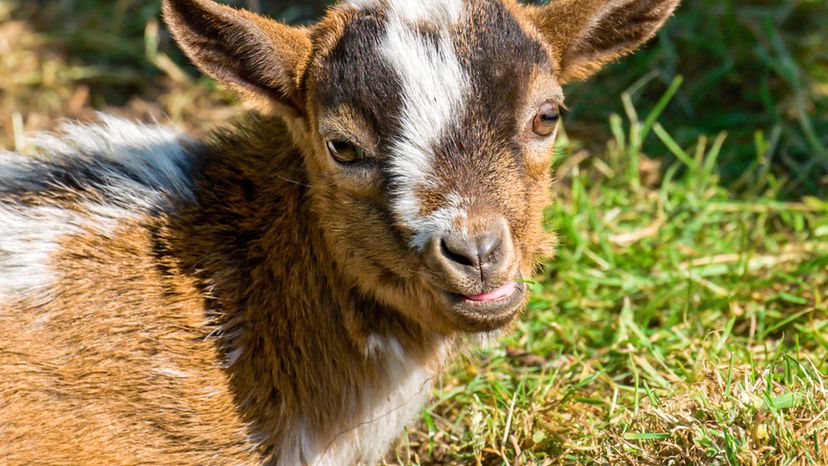
Shutterstock
Is this animal dangerous to humans?
Yes, it is.
No, not at all.
Goats are among the earliest domesticated animals, believed to be tamed and herded sometime between 6000 and 7000 BC. They're intelligent, they're curious, and they love to get into mischief -- but they aren't considered deadly or we'd never keep them in our yards and barns.
It can be, but it's rare.
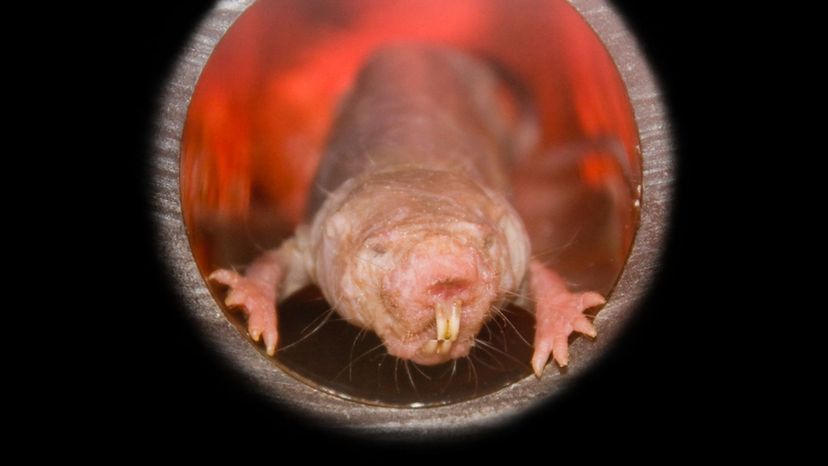
Shutterstock
Is this animal dangerous to humans?
Yes, it is.
No, not at all.
The hairless, fanged, and wrinkled mole rat looks a lot like a shrunken walrus. They're unique because, even though they're mammals, they're cold-blooded. They're also unique because they are able to survive without oxygen, the species appears to be resistant to cancers, and they have evolved the ability to barely feel pain. So not only is the naked mole rat harmless to humans, there could be a few things we might be able to learn from them.
It can be, but it's rare.
Advertisement
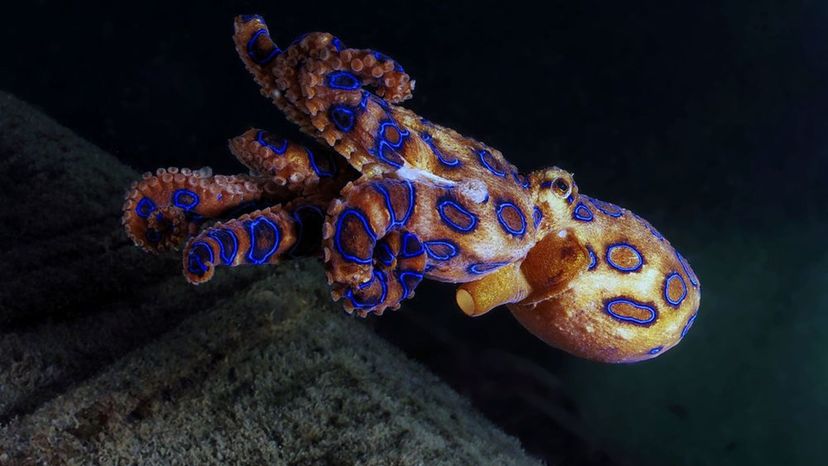
n/a
Is this animal dangerous to humans?
Yes, it is.
The blue-ringed octopus is not fooling around. It lives in tide pools, which means a human might accidentally step on one -- and with no antidote, their toxin can be lethal without emergency medical intervention. Although this octopus is just the size of a pencil and weighs less than a slice of bread, it has enough toxin to kill as many as 10 adult men in just a few minutes.
No, not at all.
It can be, but it's rare.
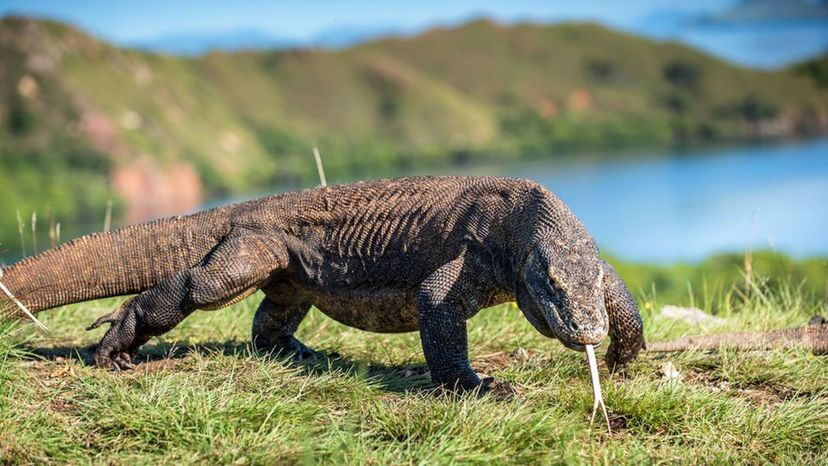
Shutterstock
Is this animal dangerous to humans?
Yes, it is.
This dragon-like creature is the largest living lizard in the world. Komodo drgaons can eat 80 percent of their body weight in just one meal, and they dine on large prey such as pigs, water buffalo, and, yes, humans -- not only are their serrated teeth dangerous, their saliva is venomous.
No, not at all.
It can be, but it's rare.

Shutterstock
Is this animal dangerous to humans?
Yes, it is.
Although most are about 8 feet long, Black Mambas can grow up to 14 feet long, making them the longest venomous snake in Africa. They're athletic and can slither as fast as 12.5 miles per hour, which is faster than you can run. And they're highly poisonous -- only two drops of venom from the Black Mamba's bite is lethal.
No, not at all.
It can be, but it's rare.
Advertisement
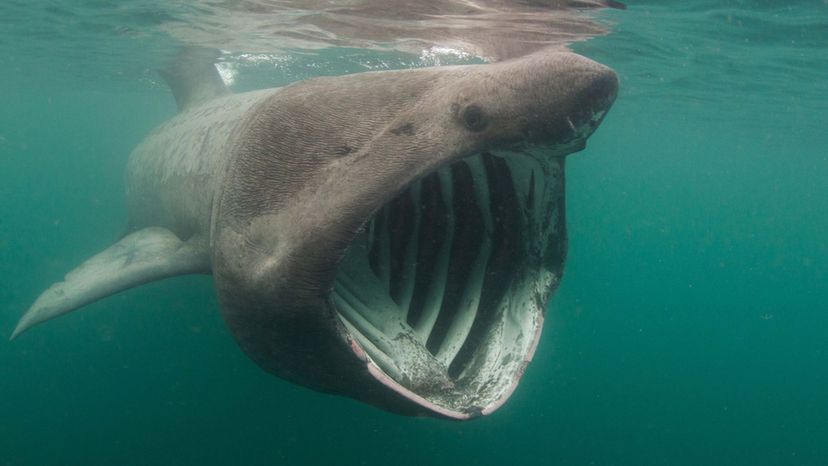
n/a
Is this animal dangerous to humans?
Yes, it is.
No, not at all.
They grow as long as 32 feet. They weigh more than 5 tons. And they often swim with their enormous mouths open, scooping up plankton. See them near the surface of the water and they look impressive -- after all, they're the second-largest fish in the world. But this slow-moving Basking Shark is passive and not a danger to humans (but you'll want to steer clear of their skin, which is so rough it can injure you).
It can be, but it's rare.

shutterstock
Is this animal dangerous to humans?
Yes, it is.
Hippopotamuses love water, but they don't love humans. In fact, they're aggressive toward us, and have been known to attack on both land as well as in boats. As the human population grows, however, people are pushing hippos from their habitat.
No, not at all.
It can be, but it's rare.

n/a
Is this animal dangerous to humans?
Yes, it is.
About 4.5 million people are bitten every year. And it may surprise you to know that there were 31 dog-bite-related deaths in the United States in 2016 -- with 61 percent of those fatalities involving more than one dog.
No, not at all.
It can be, but it's rare.
Advertisement

Shutterstock / zossia
Is this animal dangerous to humans?
Yes, it is.
No, not at all.
While allergies to house cats are common, and it's reported cats inflict roughly 400,000 bites on people every year, they aren't dangerous to humans. Oh, and that old wives' tale that they'll steal a baby's breath? It's a myth.
It can be, but it's rare.
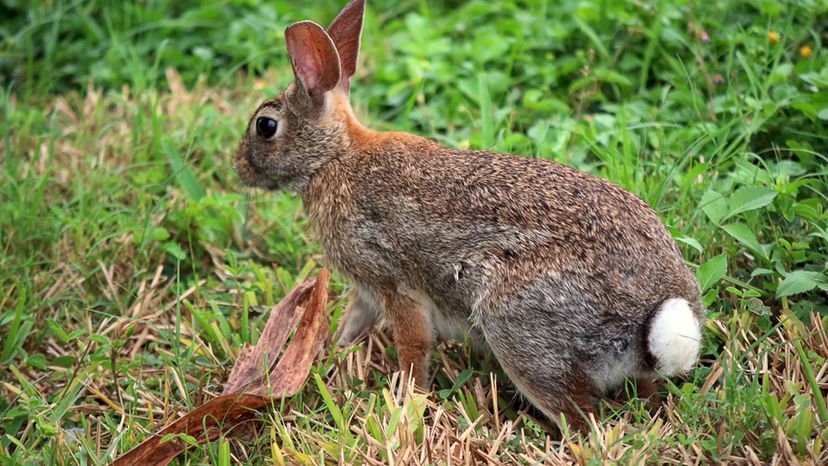
n/a
Is this animal dangerous to humans?
Yes, it is.
No, not at all.
These social animals are herbivores. That means they eat grasses, clover, and wildflowers -- but Cottontails don't have a taste for people. In fact, when frightened, these bunnies are most likely to freeze in place.
It can be, but it's rare.
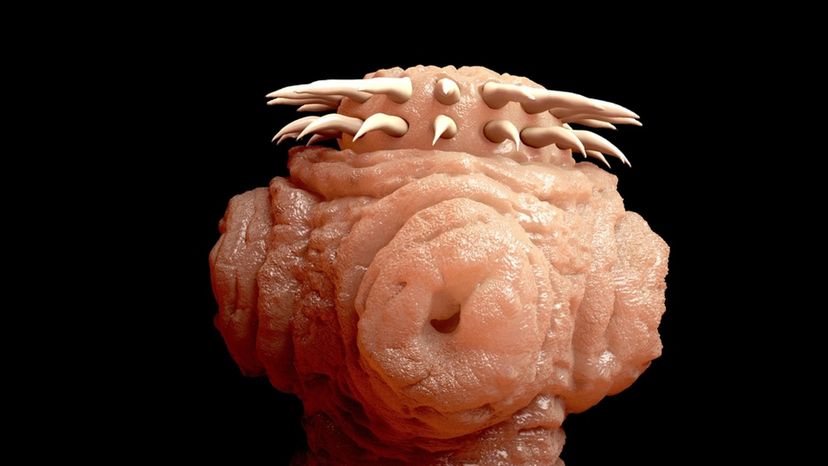
Shutterstock
Is this animal dangerous to humans?
Yes, it is.
Tapeworms are long and flat, and their bodies are made up of a head, a neck, and a chain of segments called proglottids that can grow to as long as 50 feet. You'd need to swallow eggs or larvae to become infected, and having one attached to your intestinal wall can cause symptoms such as weight loss and loss of appetite, among other signs -- and sometimes no symptoms at all. And the adults, well, they can live for up to 30 years in a host. Fatalities vary from year to year, but there are deaths -- the pork tapeworm, for instance, was responsible for approximately 400 deaths, worldwide, in 2015.
No, not at all.
It can be, but it's rare.
Advertisement
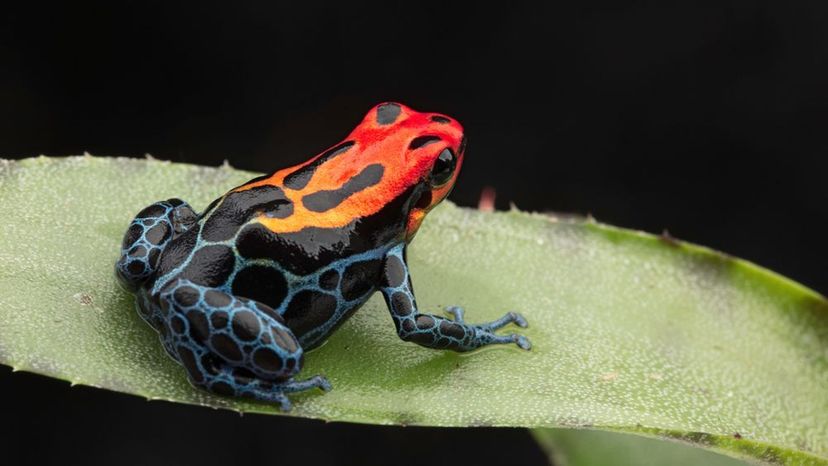
Shutterstock
Is this animal dangerous to humans?
Yes, it is.
While scientists aren't sure what makes these tiny frogs so toxic, there's no question they are -- in fact, the Golden Poison Dart Frog has enough nerve toxin at one time to kill 20,000 mice or 10 adult men. The poison glands are located just below the frog's skin, so holding it, or trying to eat it, proves lethal.
No, not at all.
It can be, but it's rare.

Shutterstock
Is this animal dangerous to humans?
Yes, it is.
No, not at all.
Neither doves nor pigeons, of the same bird family, pose a danger to humans. In fact, they're much more likely to work with us than against us, used as couriers and in celebrations of peace. Mourning doves, similar to Rock and Band-tailed pigeons, are the most common doves in the U.S.
It can be, but it's rare.

shutterstock
Is this animal dangerous to humans?
Yes, it is.
Of the 23 types of crocodile species, six are dangerous to adult humans -- in fact, its powerful jaws are capable of snapping our bones as though they were twigs. Crocodiles are opportunistic, and they'll prey on any animal that's close by, human or otherwise. In Africa, several hundred attacks on humans are reported every year, and it's believed that one-third to one-half of those attacks are fatal. When it comes to alligator attacks, however, fatalities are rare.
No, not at all.
It can be, but it's rare.
Advertisement

Shutterstock
Is this animal dangerous to humans?
Yes, it is.
No, not at all.
They're known for withstanding extreme environments and inhospitable landscapes. But, what's in those humps? It's not water that camels store; it's fat (which has a high-concentration of water), which can sustain them sometimes for months. And when they're around water, they can drink up to 40 gallons in a matter of a few minutes. Despite their penchant for (innocent?) grunting, bucking, and spitting at people, camels are considered part of the family in many parts of the world.
It can be, but it's rare.
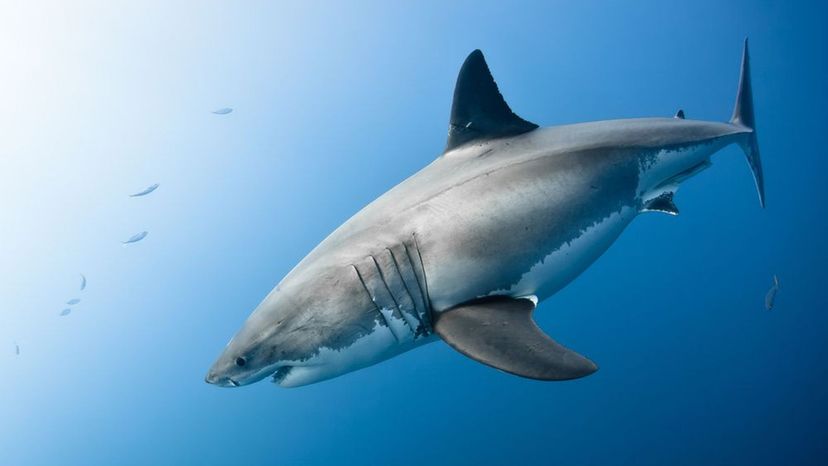
Shutterstock
Is this animal dangerous to humans?
Yes, it is.
On average, humans kill about 20 million sharks every year. And in comparison, sharks, well, they kill about 10 humans, on average, in a year. Anyone who's ever seen the movie, "Jaws," won't be surprised to hear that the White Shark, known as the Great White, has been involved in more attacks on people than any other type of shark -- although it's thought (or hoped) that attacks on humans are accidental.
No, not at all.
It can be, but it's rare.
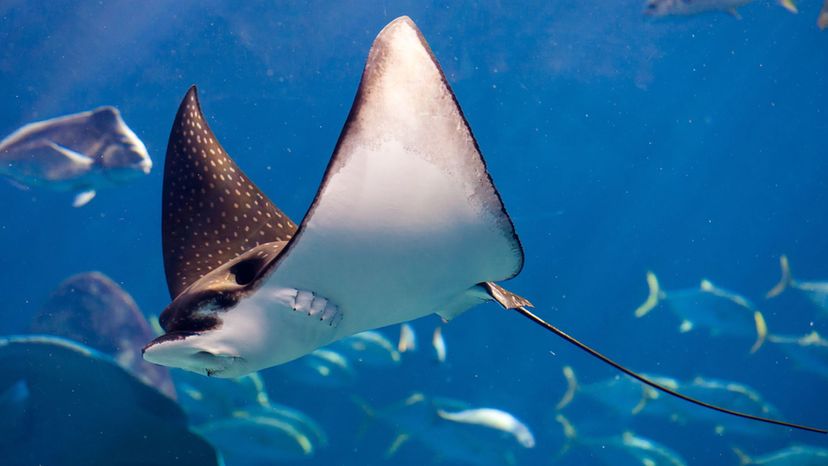
Shutterstock
Is this animal dangerous to humans?
Yes, it is.
No, not at all.
Manta rays are giant. These filter-feeders have flat, kite-shaped bodies that can grow up to 30 feet and weigh as much as 4,000 pounds. While sharks are the manta ray's natural predator, the population also faces threats from humans -- such as entanglement in fishing line or net. But humans don't need to worry about being prey to the manta ray, as they dine on plankton and other small fish that fit through the filtration system in their mouths.
It can be, but it's rare.
Advertisement
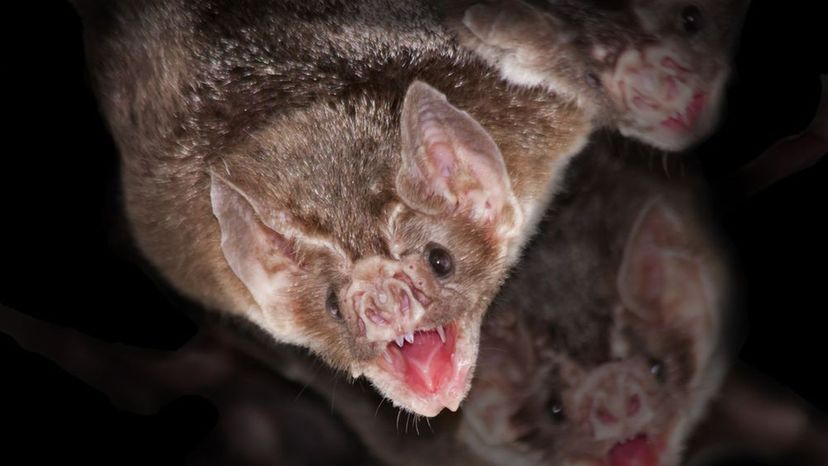
Shutterstock
Is this animal dangerous to humans?
Yes, it is.
No, not at all.
It can be, but it's rare.
They're the only mammals that can fly, but that's not the only thing that makes the Vampire Bat different: they also dine exclusively on blood. While it was long thought they dined on other creatures, DNA at Brazil's Catimbau National Park suggests that in addition to cows and chickens, these bats do, in fact, have a taste for humans. Although you won't die from the blood draw (they don't take much), it's the potential bacteria left behind and infection that could kill you -- plus, a bite from a vampire bat could put you at risk for a rabies infection.

n/a
Is this animal dangerous to humans?
Yes, it is.
Of all fish, the stonefish is unique because it can survive for 24 hours out of water -- and of all fish, it's also the most venomous. Stonefish don't prey on humans, though. Usually, we just don't notice where we're stepping, and that can lead to a venom injection from the 13 spines in its dorsal fin. Stonefish stings have both cardiovascular and neuromuscular toxicity, but there is an antidote to this venom.
No, not at all.
It can be, but it's rare.
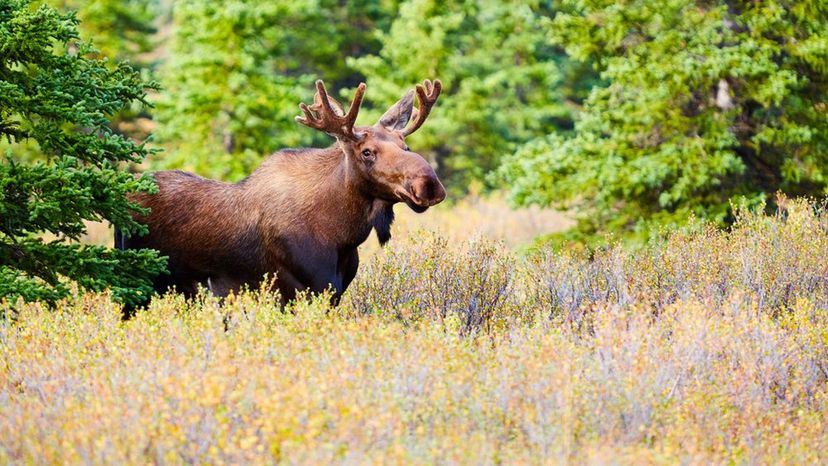
Shutterstock
Is this animal dangerous to humans?
Yes, it is.
No, not at all.
It can be, but it's rare.
Although their behavior doesn't pose a danger to humans, in certain areas, the size of the moose population can amplify or trigger problems. For instance, if disturbed or threatened -- such as if you get to close to them or a calf, expect one angry moose.
Advertisement

n/a
Is this animal dangerous to humans?
Yes, it is.
No, not at all.
These small members of the squirrel family sure are cute, but they are able to cause some serious damage to your home and yard -- however, they're not after you. While all wild animals could, potentially, bite you, chipmunks are non-aggressive, so they're only going to bother you if they feel threatened by you.
It can be, but it's rare.
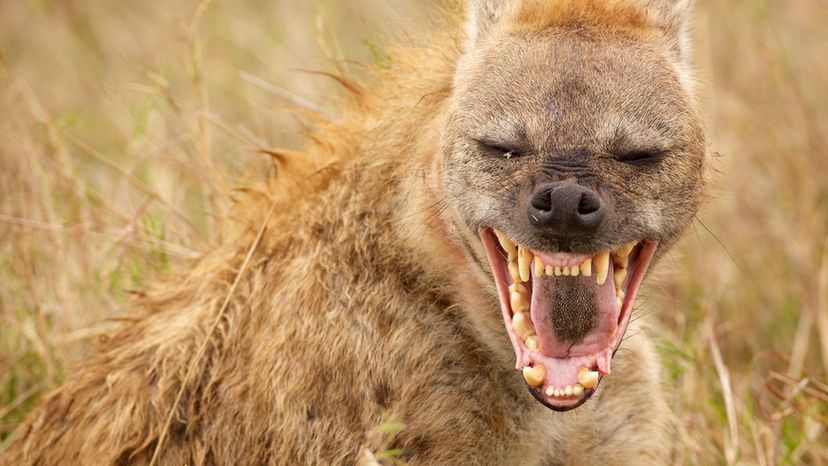
n/a
Is this animal dangerous to humans?
Yes, it is.
They're about the size of a large dog, but the jaws of a hyena are as powerful as those of a Great White. They're hunters known to attack other animals, including humans, as well as scavengers not above dining vegetarian, or, if stories are to be believed, snacking on non-edibles.
No, not at all.
It can be, but it's rare.
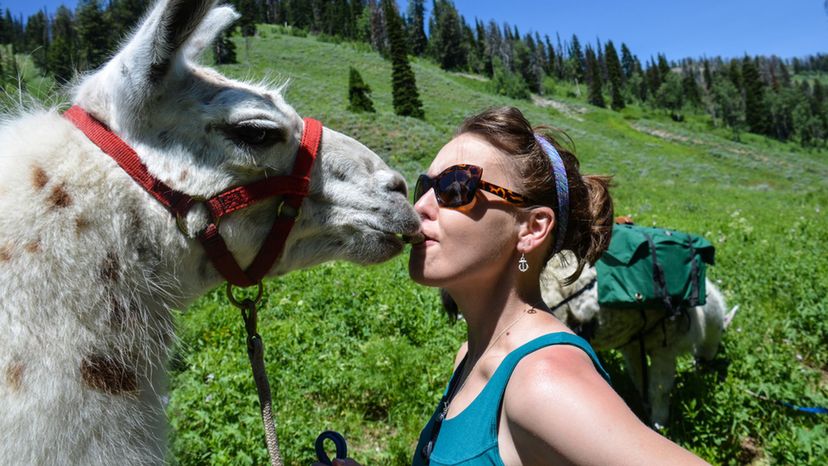
Shutterstock
Is this animal dangerous to humans?
Yes, it is.
No, not at all.
These pack animals are fast -- llamas can run at speeds of up to 35 miles per hour. They're native to the Andes and are able to carry up to 75 pounds as far as 20 miles in one day. Overload one, though, and you'll see that llama get angry and stubborn, often spitting and sitting down until the weight is removed. But llamas don't consider humans prey -- you just might get kicked from time to time.
It can be, but it's rare.
Advertisement
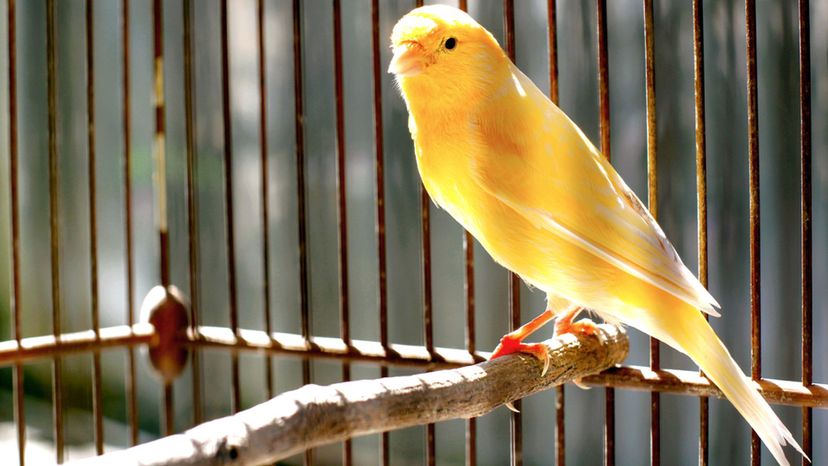
Shutterstock
Is this animal dangerous to humans?
Yes, it is.
No, not at all.
The most famous canary may be Tweety, the yellow canary paired with Sylvester the cat in Looney Tunes and Merrie Melodies cartoons. But in real life, in the early 20th century, British, Canadian, and American miners used canaries to detect carbon monoxide and other toxic gases in coal mines, before humans could be hurt by those gases. Canaries, though, aren't harmful to humans.
It can be, but it's rare.
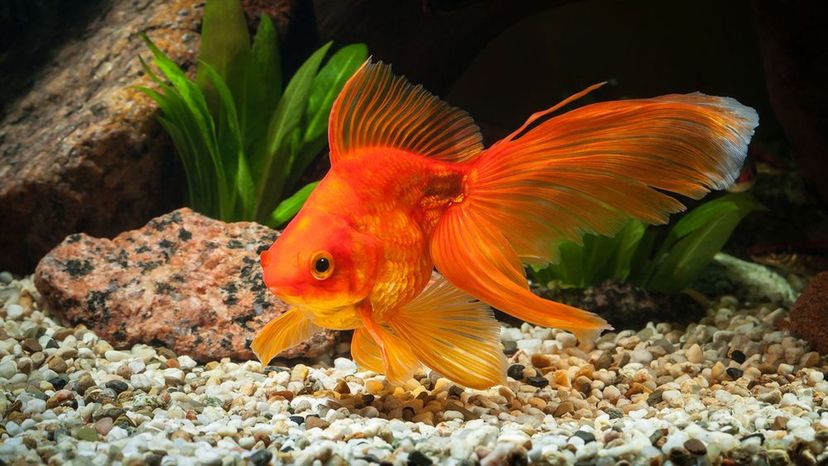
Shutterstock
Is this animal dangerous to humans?
Yes, it is.
No, not at all.
The attention span of a goldfish has long been the butt of many jokes. But during a 2013 study, the human attention span, researchers found, has dropped to only eight seconds -- and that's one second shorter than a goldfish. Goldfish, though, are polite about it, and have never considered humans as a threat.
It can be, but it's rare.
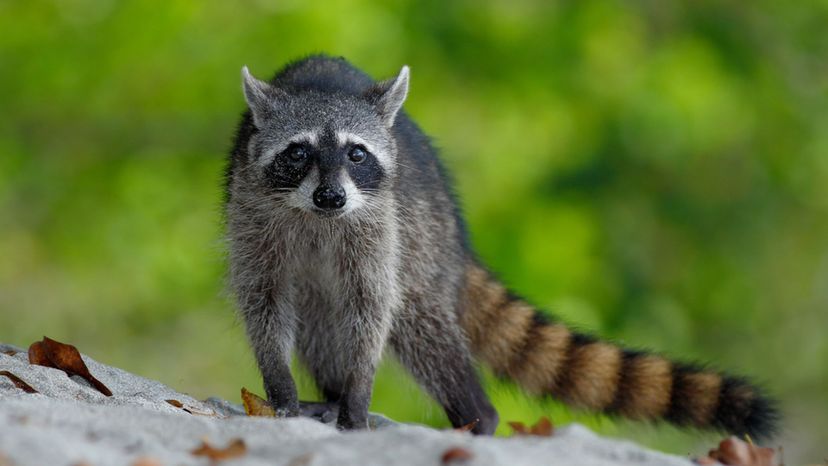
n/a
Is this animal dangerous to humans?
Yes, it is.
No, not at all.
It can be, but it's rare.
From emptying wasp nests to preying on small rodents, raccoons will eat a lot of the pests in your yard. However, they carry diseases that can find their way into your home, your pets, and you. Raccoons carry roundworms and fleas, and they're among the primary carriers of rabies in the U.S.
Advertisement
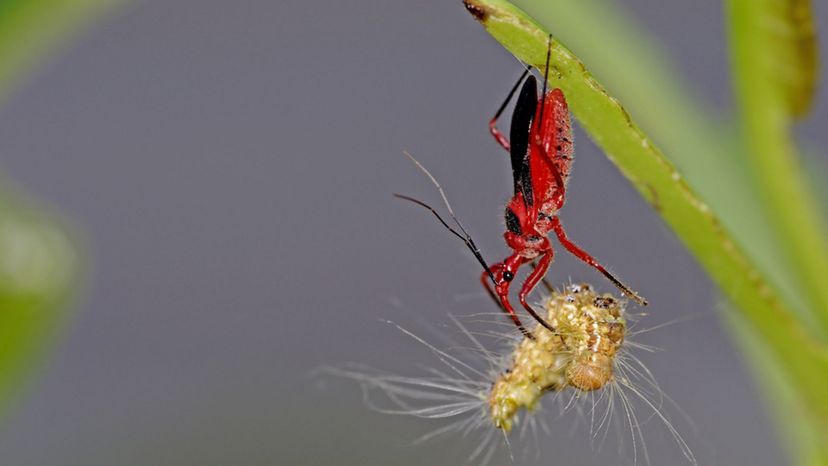
Shutterstock
Is this animal dangerous to humans?
Yes, it is.
No, not at all.
It can be, but it's rare.
Assassin bugs live up to their name: not only do they suck their prey dry after impaling and paralyzing it, this insect then carries the corpse, or corpses, on its back as a kind of armor or camouflage. It's considered a gardener's friend because it preys on insects such as aphids, but it is also not shy about biting you -- and that's not only very painful, it can make you very sick.
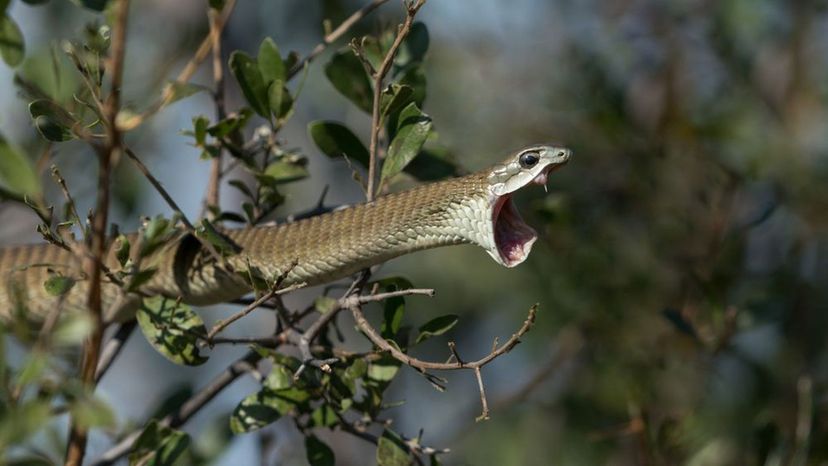
Shutterstock
Is this animal dangerous to humans?
Yes, it is.
This venomous snake likes to hang out in trees, and was once believed to be harmless -- that is until American herpetologist Karl P. Schmidt died from a bite. The Boomslang is rear-fanged and can open its mouth to just about a 180-degree angle when biting. The venom it injects is deadlier than that of a cobra or a black mamba.
No, not at all.
It can be, but it's rare.
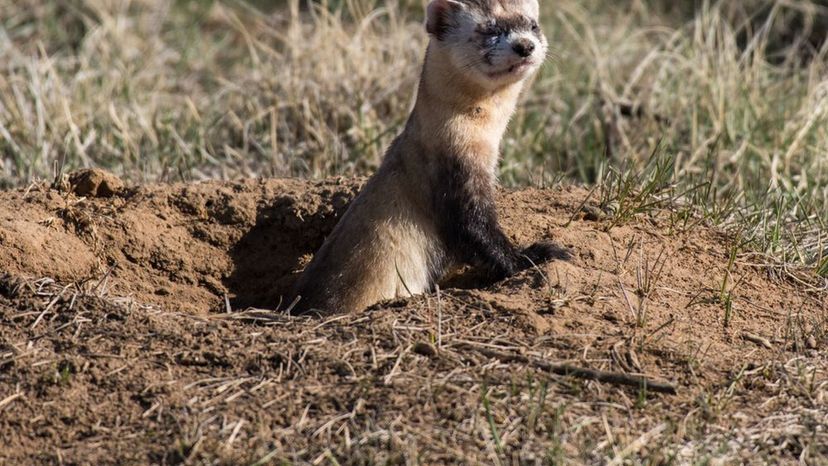
Shutterstock
Is this animal dangerous to humans?
Yes, it is.
No, not at all.
Being around a ferret is like being around a kitten, no matter what their age. When excited, they may engage in what's called the "weasel war dance" in an effort to get others to play with them -- on the flip side, they scare easily (and may hiss), and are prone to wandering off. But what you don't need to worry about is aggression toward you.
It can be, but it's rare.
Advertisement
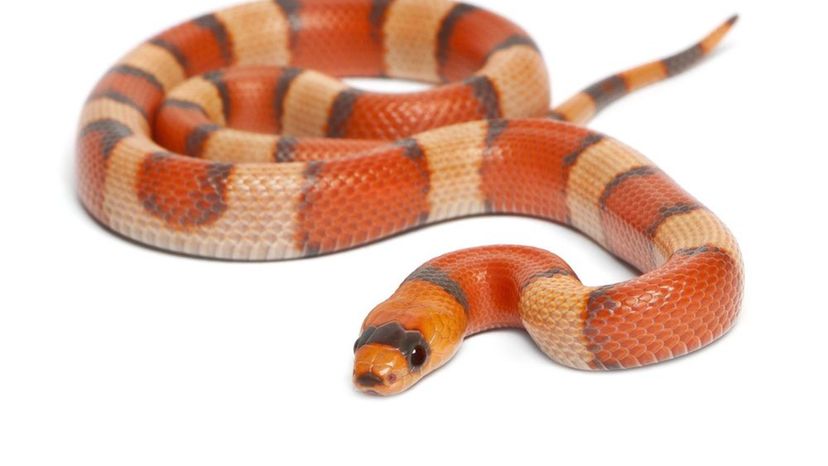
Shutterstock
Is this animal dangerous to humans?
Yes, it is.
No, not at all.
Milk snakes prey on small animals such as rodents and birds, and squeeze their prey until it suffocates before they eat it. Whlie you may see them slithering around your yard or hiding in the garage, they're harmless -- unless you're a mouse.
It can be, but it's rare.
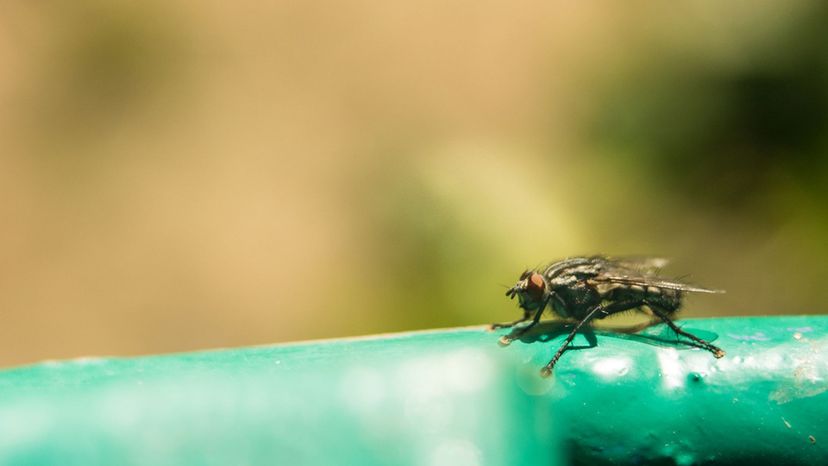
Shutterstock
Is this animal dangerous to humans?
Yes, it is.
One bite from the tsetse fly and you risk being infected with a parasitic disease called African Trypanosomiasis, known as sleeping sickness. Without treatment, it's fatal. Like rabies, it causes madness before death.
No, not at all.
It can be, but it's rare.

Shutterstock
Is this animal dangerous to humans?
Yes, it is.
No, not at all.
Don't call ravens bird-brained -- they're intelligent birds, with cognitive abilities as sophisticated as our own. But unless you threaten a raven, or get too close to its nest or young, it may just rather stand around and laugh at you.
It can be, but it's rare.
Advertisement
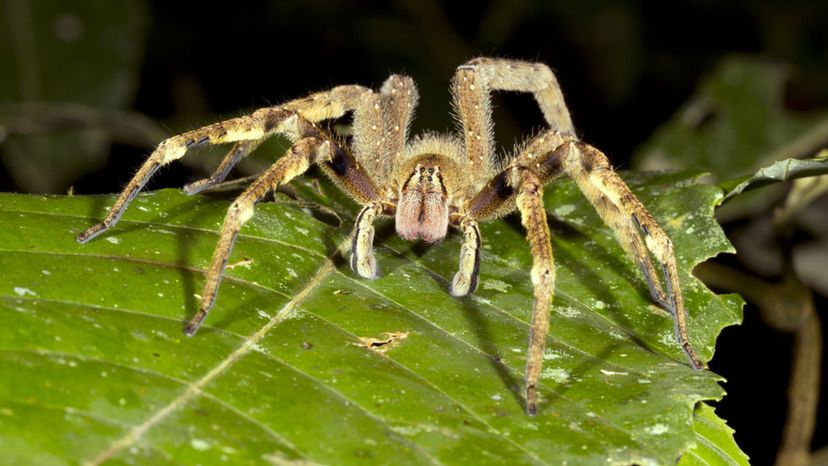
Shutterstock
Is this animal dangerous to humans?
Yes, it is.
The venom this spider produces is a potent neurotoxin that causes severe pain, as well as loss of muscle control that results in paralysis, and breathing problems that result in, eventual, asphyxiation. Although some believe humans are too big to be completely struck, it is considered one of the few species of spider to be truly dangerous to humans. On the plus side, the venom of the Brazilian wandering spider is being studied for potential human benefits, such as erectile dysfunction treatment.
No, not at all.
It can be, but it's rare.
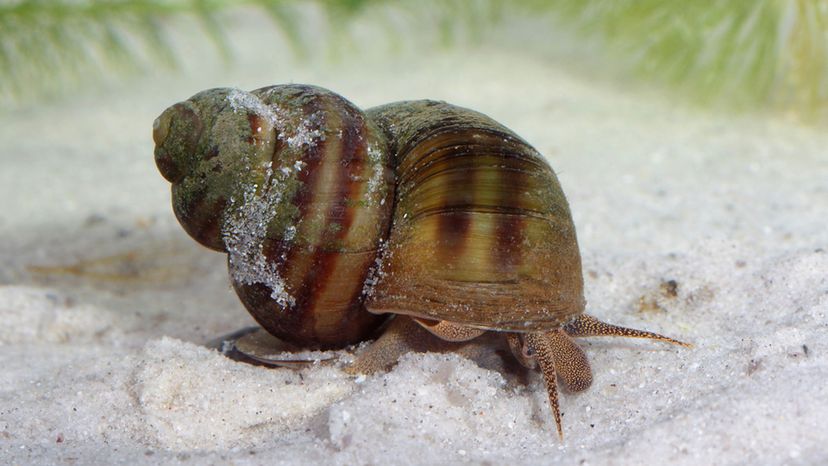
n/a
Is this animal dangerous to humans?
Yes, it is.
Snails? Deadly? They can be. Freshwater snails, responsible for more than 200,000 human deaths every year, are what you'd classify as small, but deadly. It's not their venom or the crushing power of their bite. It's that they carry schistosomiasis, a parasitic disease that infects 250 million people around the world annually.
No, not at all.
It can be, but it's rare.
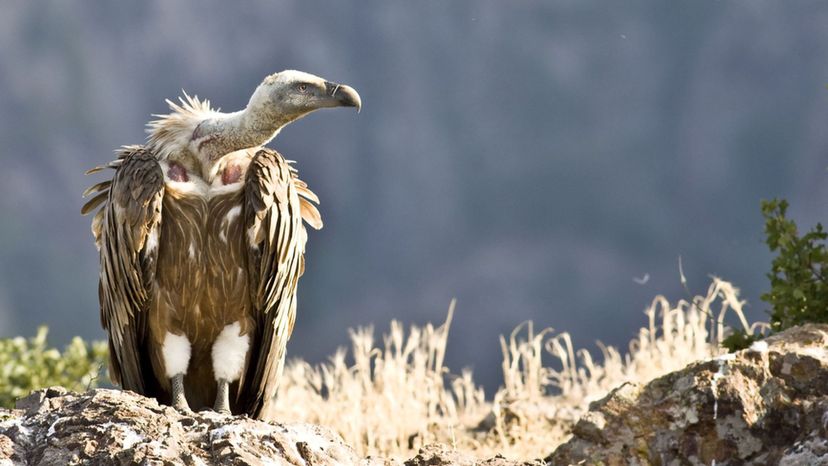
Shutterstock
Is this animal dangerous to humans?
Yes, it is.
No, not at all.
Both the turkey and the American black vulture, both found in the United States, have special protections making it illegal to take, kill, or have one. But neither are aggressive toward humans, especially not without reason.
It can be, but it's rare.
Advertisement
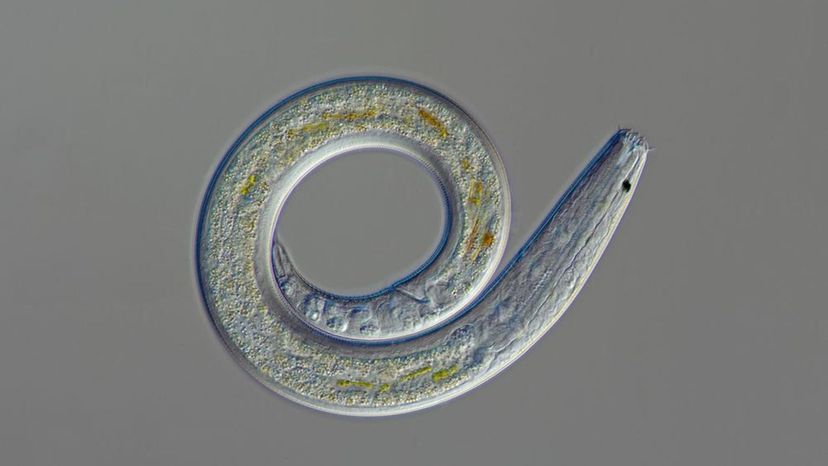
Shutterstock
Is this animal dangerous to humans?
Yes, it is.
They're the most common parasitic infection among dogs, who usually become infected as puppies. But it's not limited to dogs -- roundworms also infect humans, known as Toxocariasis infection, through infected dirt or infected stool (of animals or people).
No, not at all.
It can be, but it's rare.
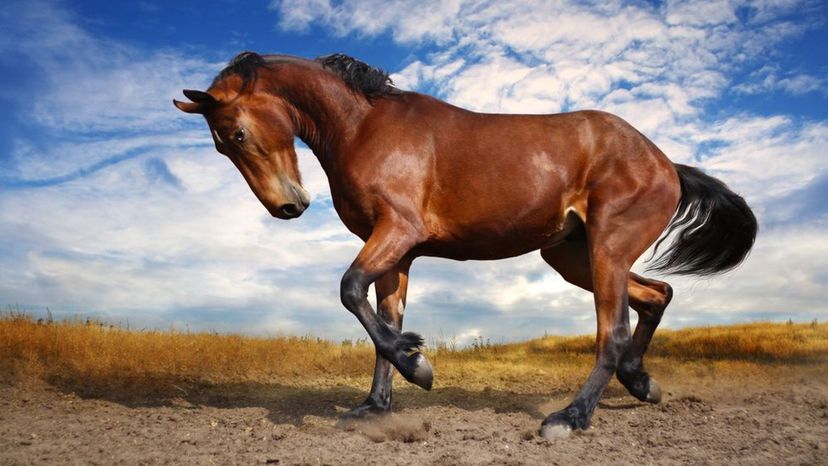
Shutterstock
Is this animal dangerous to humans?
Yes, it is.
No, not at all.
A domesticated horse's first reaction to a threat is to flee, not to fight, and generally considers people to be pretty non-threatening. They are large animals, though, which need to be respected -- accidents around horses can and do happen.
It can be, but it's rare.
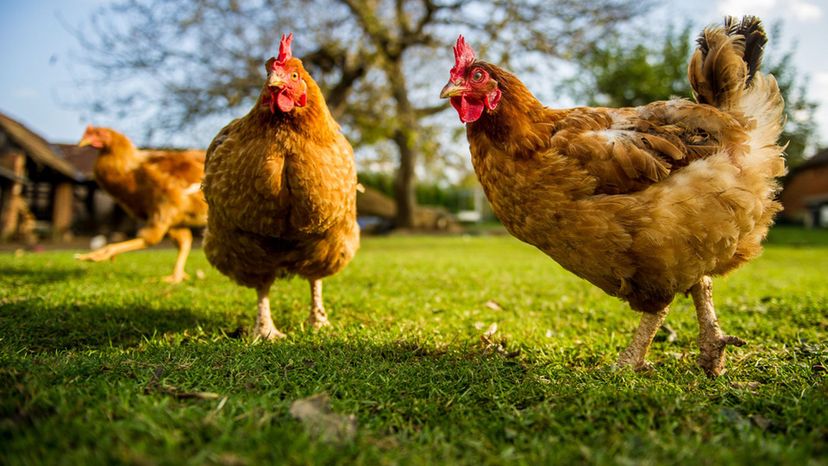
Shutterstock
Is this animal dangerous to humans?
Yes, it is.
No, not at all.
It can be, but it's rare.
While they aren't naturally aggressive toward people, chickens are dangerous to humans because of the germs they can transmit, including Salmonella, an infection that's fatal to about 380 people each year. In addition to parasites, chickens also transmit the bacterium Enterococcus faecalis, which is responsible for many human urinary tract infections.
Advertisement
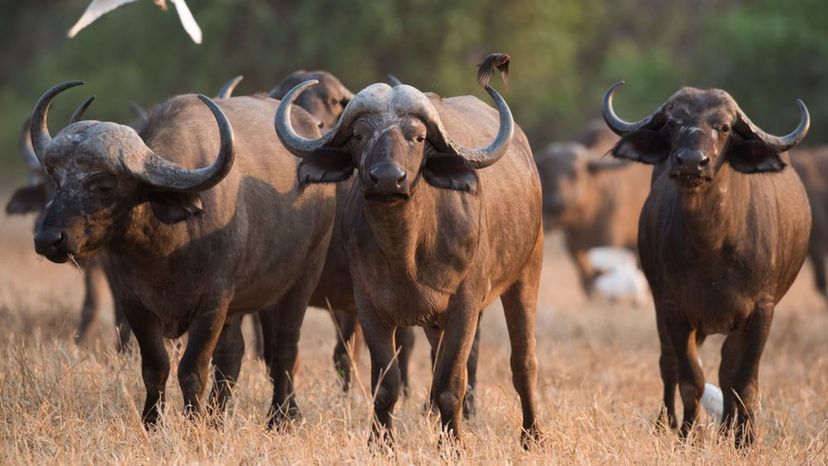
n/a
Is this animal dangerous to humans?
Yes, it is.
When you're given the nickname, Black Death, it's hard to argue that you're anything but dangerous. It's said the Cape buffalo -- Black Death -- has killed more big game hunters than any other animal on the African continent. It's capable of charging at speeds as fast as 35 miles per hour, and will circle its prey before tearing into it with its horns.
No, not at all.
It can be, but it's rare.

Shutterstock
Is this animal dangerous to humans?
Yes, it is.
There are skeletons of 27 people showing signs of projectile wounds and blunt force trauma, not from last week but rather dating back about 10,000 years ago. Others, found among pre-history humans, show signs of cannibalism. Person against person violence isn't new to our species. Although as many as 12 percent of recorded deaths during the medieval period were human-against-human, the rate at which we kill our own species has been calculated at about 2 percent of deaths.
No, not at all.
It can be, but it's rare.
You Got:
/50
Shutterstock